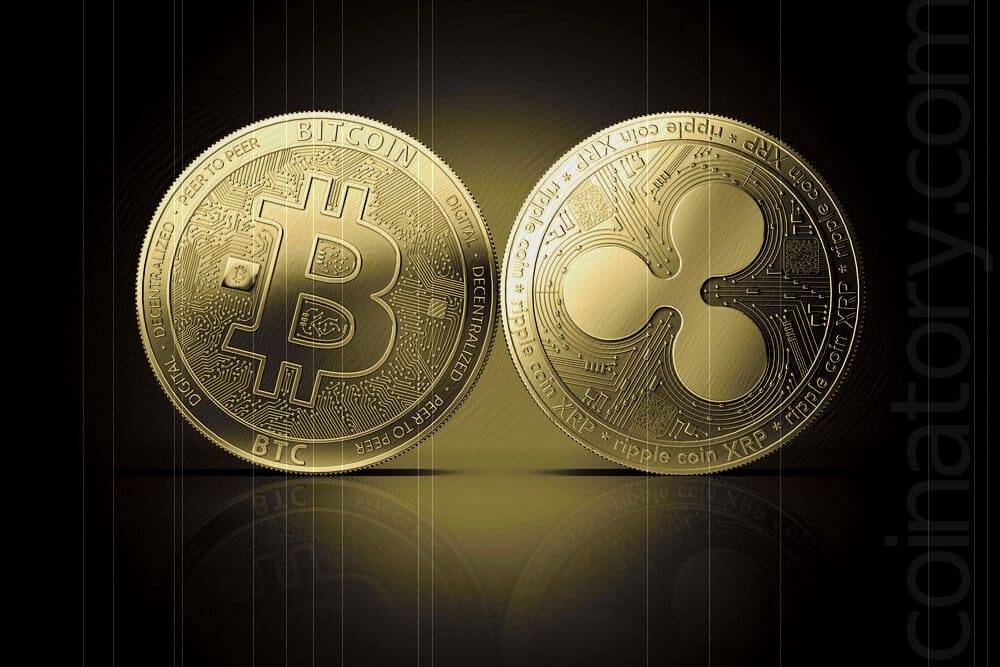
While bitcoin remains the clear leader among cryptocurrencies, Ripple continues to surge ahead with growing adaptability and varied applications. As of this writing, Ripple ranks third on the list of top virtual currencies by market cap, behind bitcoin and Ethereum.
This article explains the differences between bitcoin and Ripple.
Bitcoin operates on a public blockchain ledger that supports a digital currency used for payment for goods and services. Bitcoin is primarily known for its bitcoin cryptocurrency (BTC).
Ripple is a technology that is mainly known for its digital payment network and protocol. Though Ripple also has its own cryptocurrency XRP, it is mainly a payment settlement, asset exchange, and remittance system that works more like SWIFT, a service for international money and security transfers that is used by a network of banks and financial intermediaries.
Bitcoin Versus Ripple – An Example
To understand both with real-world comparisons, here are some analogies:
Peter, living in America, visits Walmart and pays for his purchases in U.S. dollars. He can also use his U.S. dollars to purchase other currencies for trading and investment, like GBP or JPY, and sell them off at a later date for a profit/loss.
Bitcoin is an equivalent digital currency – an alternative to real-world U.S. dollars. Peter can make a purchase and pay for it in bitcoins, or he can purchase bitcoins for trading and investments, and sell them off at a later date for profit/loss, just like trading any other fiat currency like the GBP or JPY.
Enter Ripple, the payment and settlement system that also has a currency, the XRP.
If Peter in America wants to send $100 to Paul in Italy, he can do so by instructing his American bank to execute the transaction. After taking necessary charges, Peter’s American bank will issue instructions using the present-day SWIFT system that will credit Paul’s Italian bank account with the equivalent euros (or USD). This process may involve high charges at both ends and takes a certain number of days for processing.
Ripple’s payment system uses XRP tokens for the transfer of assets on the Ripple network. The same $100 can be converted instantly by Peter to equivalent XRP tokens, which can be instantly transferred to Paul’s account over the Ripple network.
Upon suitable verification and authentication of the transaction by the decentralized Ripple network, Paul will receive the XRP tokens. He will have the option to convert it back to USD or any other currency of his choice, or even retain it as XRP tokens.
While Ripple works in a bit more complicated manner, the above example explains its basic workings. The Ripple system scores better for lower processing times and miniscule transaction charges.
Technical Differences
Bitcoin is based on the blockchain concept, a public ledger of verified transactions and record-keeping. Miners verify the transactions and add them to the bitcoin blockchain. Miners also find new bitcoins.
Instead of using the blockchain mining concept, Ripple uses a unique distributed consensus mechanism through a network of servers to validate transactions. By conducting a poll, the servers or nodes on the network decide by consensus about the validity and authenticity of the transaction. This enables almost instant confirmations without any central authority, which helps to keep Ripple decentralized and yet faster and reliable.
While bitcoin transaction confirmations may take many minutes with high transaction costs, Ripple transactions are confirmed within seconds at very low costs.
BTC has a total supply of 21 million cryptocoins, and Ripple has a total 100 billion pre-mined cryptocoins.
Bitcoin uses proof-of-work system and mining for releasing new BTC tokens, while all of the XRP tokens are pre-mined.
A cryptocoin release mechanism is different for both BTC and XRP. While bitcoins are released and added to the network as and when the miners find them, a smart contract controls the release of XRP.
A total of 55 billion XRP tokens are kept in an escrow account, and each month a maximum of 1 billion tokens are set to be released as governed by an in-built smart contract. Any unused portion of the XRP in a particular month will be shifted back to the escrow account. This mechanism ensures that there will be no possibility of misuse due to oversupply of XRP cryptocoins, and it will take many years before all the cryptocoins will be available.
While the bitcoin network is accused of being energy-hungry due to its mining system, the Ripple system consumes negligible power owing to its mining-free mechanism.
Similar to bitcoin transaction processing fee, XRP transactions are charged. Each time a transaction is performed on the Ripple network, a small amount of XRP is charged to the user (individual or organization). Primary use for Ripple XRP is for facilitating transfer of other assets, though a limited number of merchants also accept it for payments in a way similar to accepting bitcoins.
While bitcoin is being increasingly used by individuals and organizations as a virtual currency, Ripple payment system is finding use by banks. A consortium of 61 Japanese banks, in addition to few other global banks like American Express, Santander, and Fidor Bank, are reported to be testing the implementation of Ripple’s payment system.
The Bottom Line
Bitcoin remains a truly public system that is not owned by any single individual, authority, or government. Ripple, though it is decentralized, is owned and operated by a private company with the same name. Despite both having their own unique cryptocurrency tokens, the two popular virtual systems cater to different uses.







